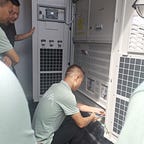- NanoBolt Lithium Tungsten Battery
Researchers at N1 Technologies, Inc. are working on improving battery anode materials by adding tungsten and carbon multilayer nanotubes. These nanotubes bind with the copper anode substrate to form a mesh-like nanostructure, creating a large surface area that can hold more ions during charge and discharge cycles. This results in faster charging speeds and greater energy storage capacity for NanoBolt lithium tungsten batteries. The nanotubes can be cut to size for use in any lithium battery design.
- Zinc-Manganese Oxide Battery
How exactly does the battery work? A team at the U.S. Department of Energy’s Pacific Northwest National Laboratory discovered unexpected chemical conversion reactions occurring in zinc-manganese oxide batteries by studying traditional assumptions. If this process can be controlled, it could increase the energy density of traditional batteries without raising costs. This makes zinc-manganese oxide batteries a potential alternative to lithium-ion and lead-acid batteries, especially for large-scale energy storage supporting the national grid.
- Organosilicon Electrolyte Battery
One issue with lithium batteries is the risk of the electrolyte catching fire or exploding. In search of a safer alternative to the carbonate-based solvent system in lithium-ion batteries, chemistry professors Robert Hamers and Robert West at the University of Wisconsin-Madison developed an organosilicon (OS) liquid solvent. The resulting electrolyte can be designed at the molecular level for use in industrial, military, and consumer lithium-ion battery markets.
- Gold Nanowire Gel Electrolyte Battery
In search of better electrolytes for lithium-ion batteries, researchers at the University of California, Irvine experimented with gels, which are less flammable than liquids. They coated gold nanowires with manganese dioxide and then covered them with an electrolyte gel. Although nanowires are usually too fragile for battery use, they became resilient. When the researchers charged the resulting electrodes, they found that it went through 200,000 cycles without losing its ability to hold a charge. In contrast, traditional batteries cycle about 6,000 times.
- String Cell™ Battery
One obstacle to using electric vehicles (EVs) is the slow charging process. To find a way to shorten the time to minutes, they modularized the battery. Their String Cell™ battery consists of a set of small, independent, self-organizing cells. Each string cell is encased in plastic and covered with conductive material, allowing it to quickly and easily make contact with other cells. An internal processing unit controls connections within the electrochemical cell. For quick charging of electric vehicles, the small balls in the battery are extracted and replaced with charged ones at a service station. At the station, the batteries can be charged during off-peak hours.
Currently, we may have to endure cold phones, hot laptops, and electric vehicles that don’t stray far from home. However, solutions seem to be on the horizon, promising a future powered by better batteries.
